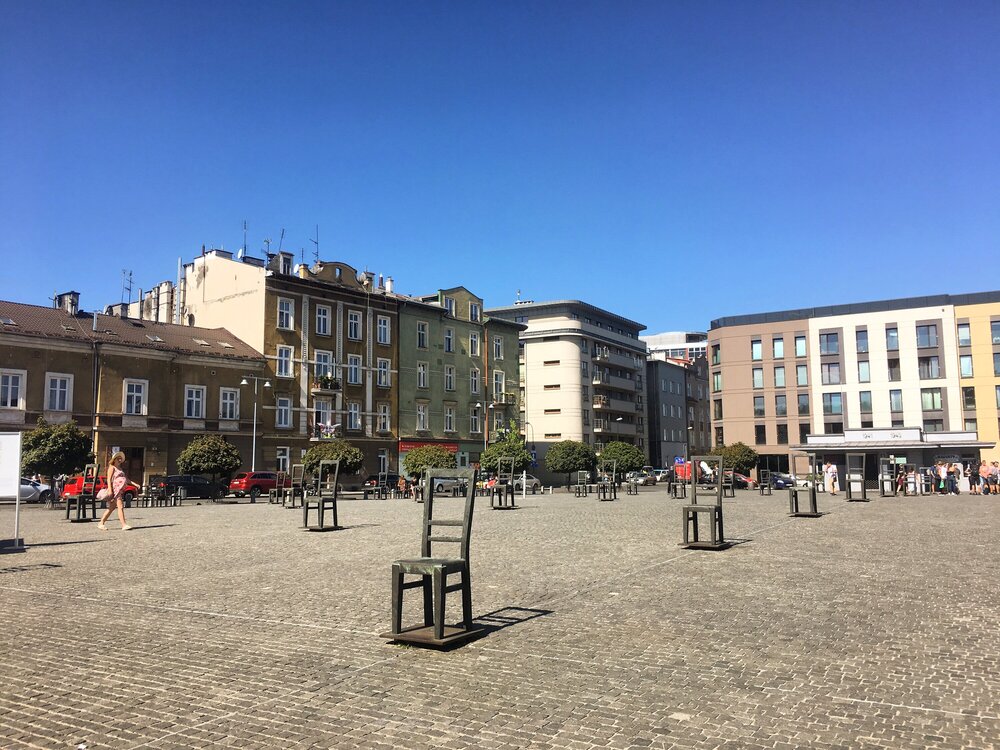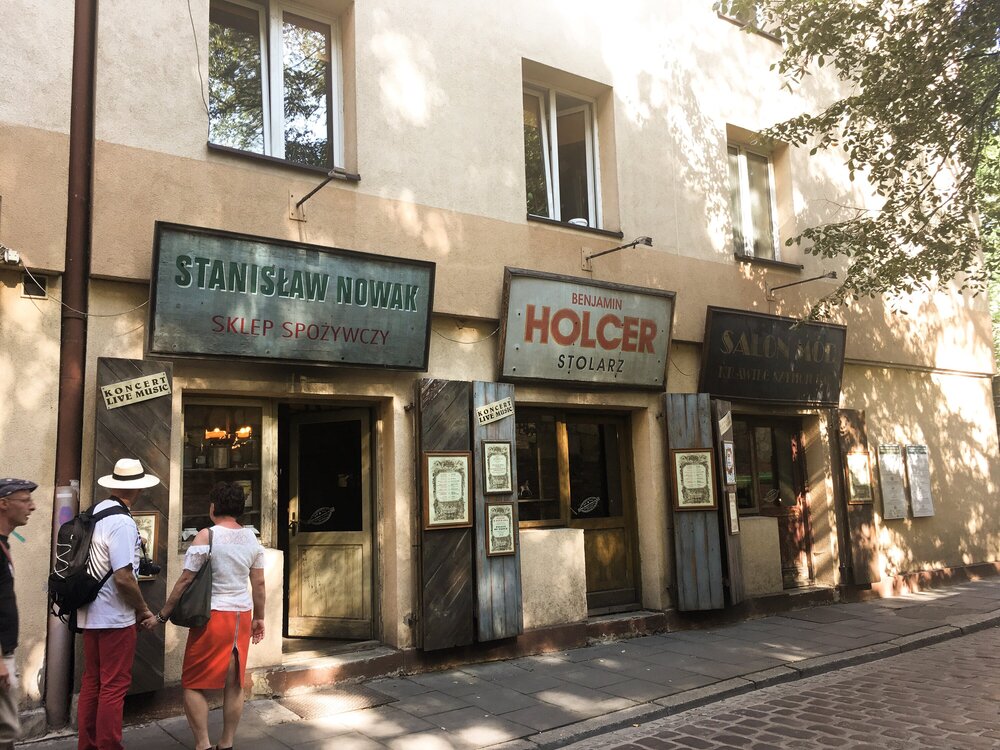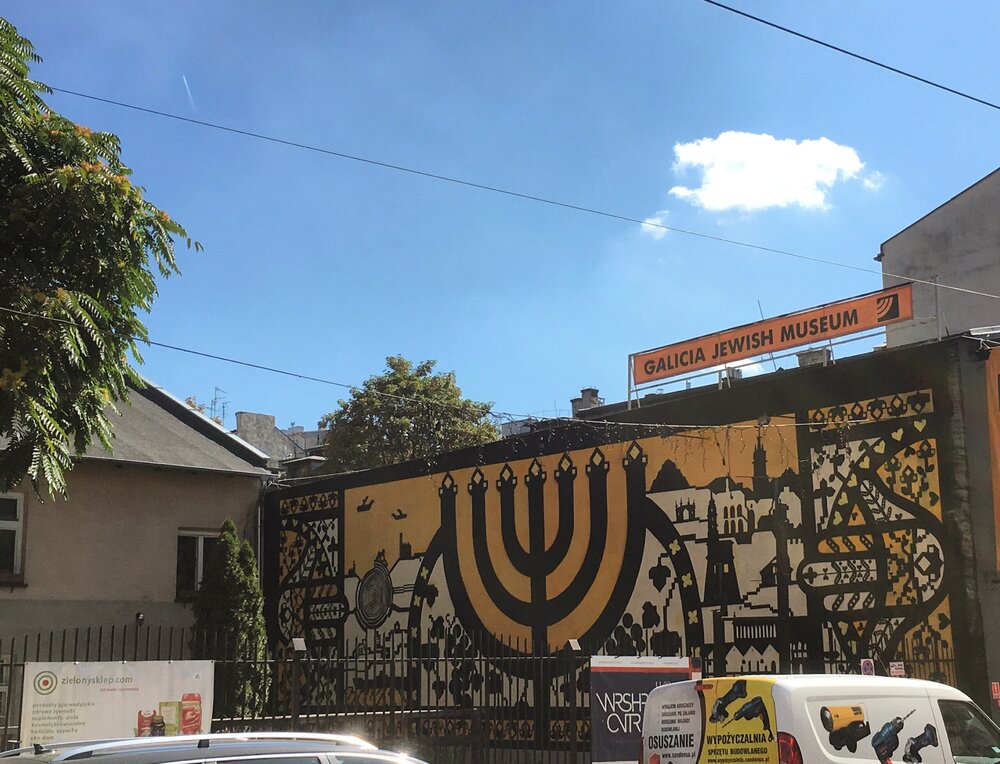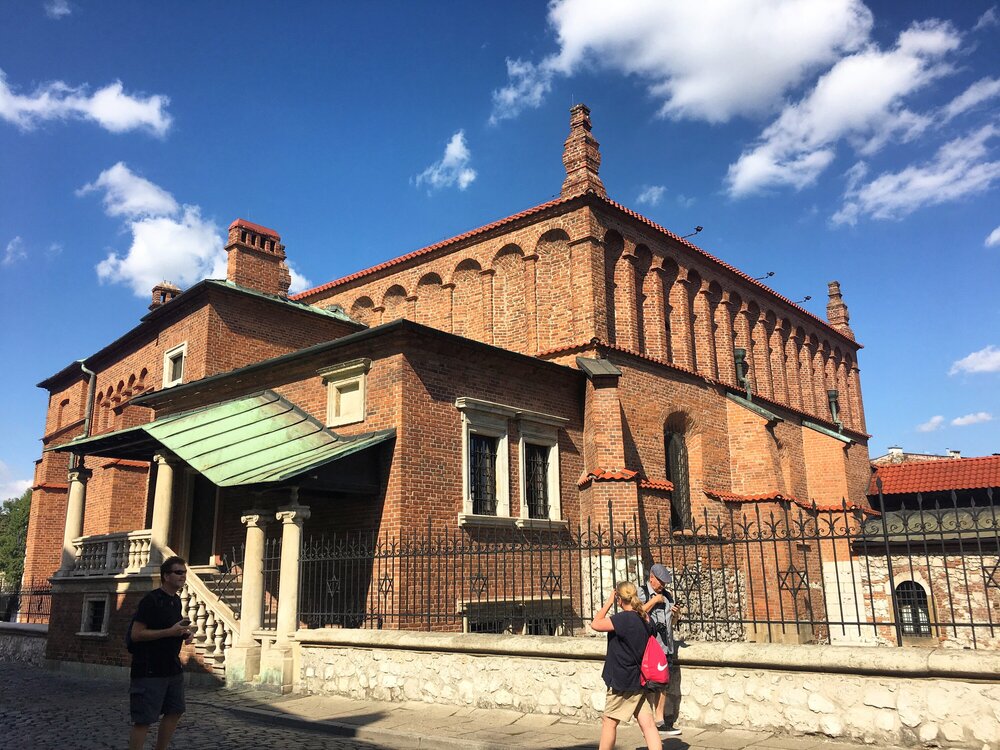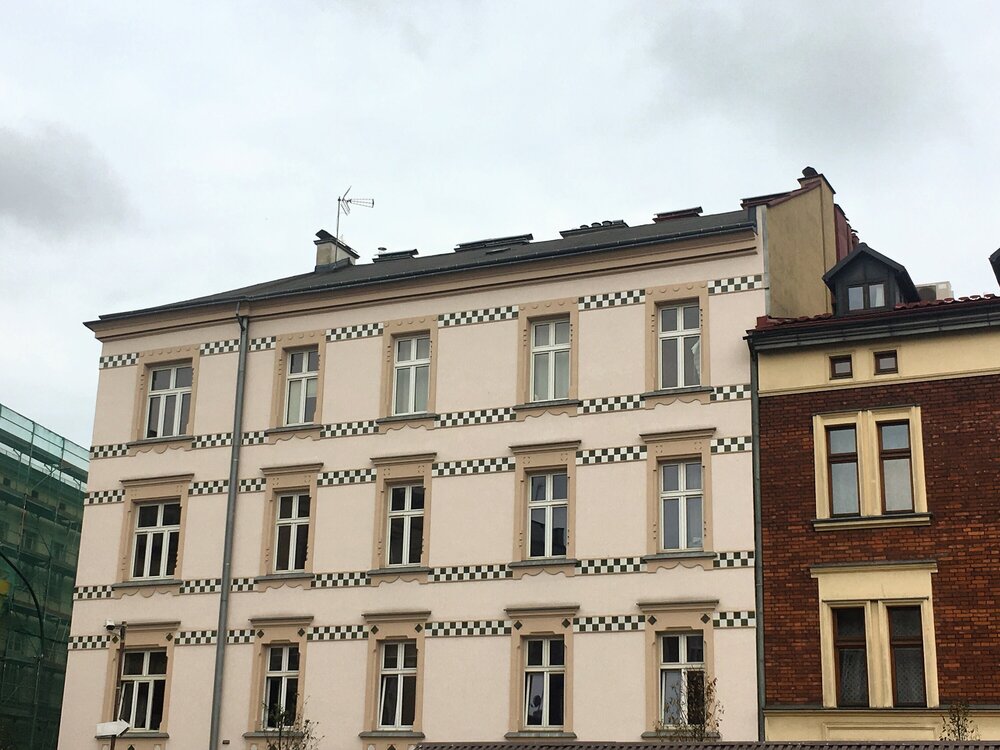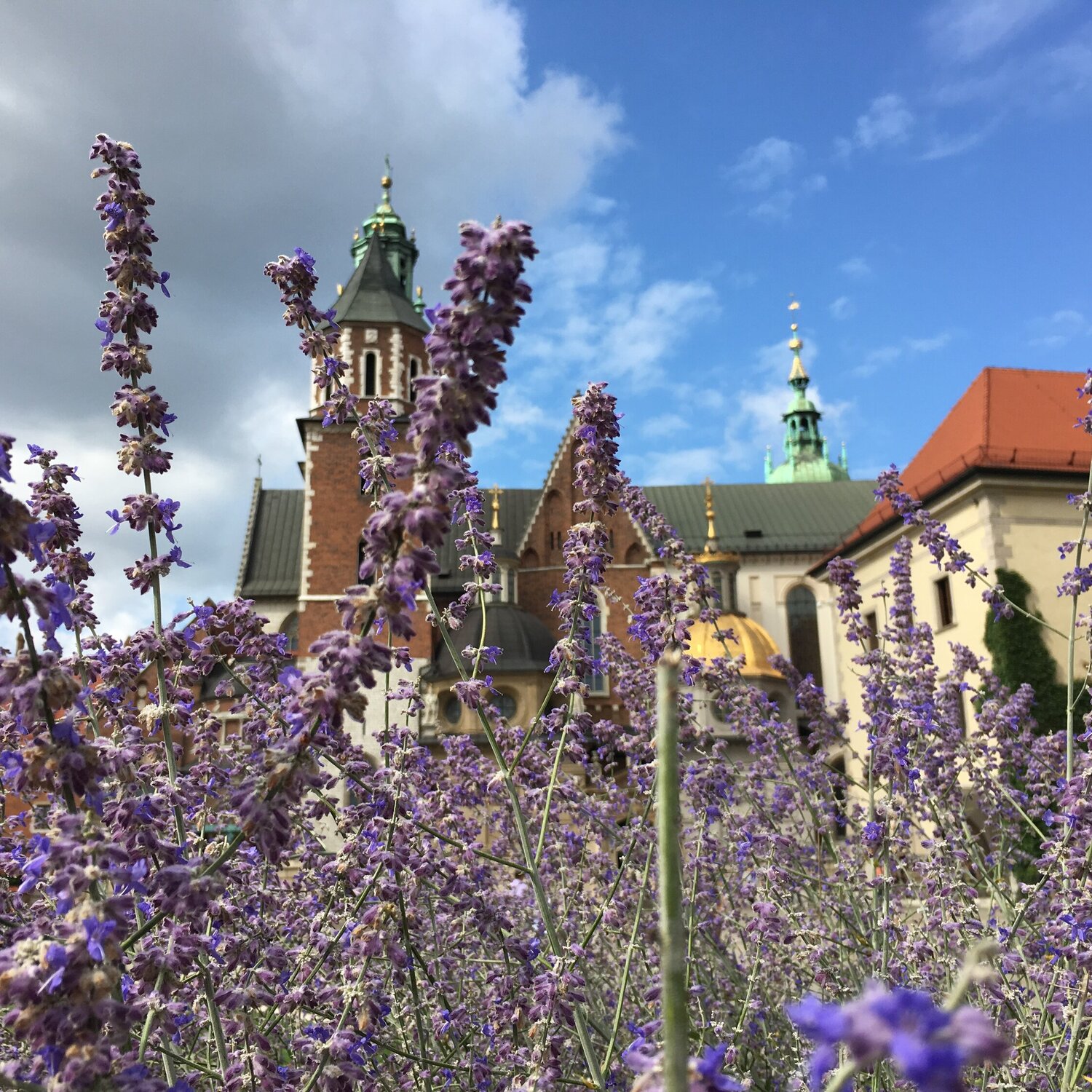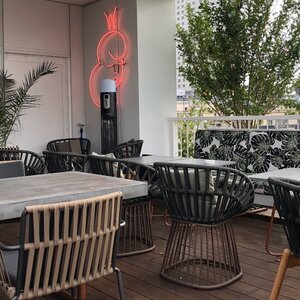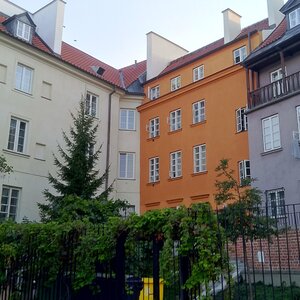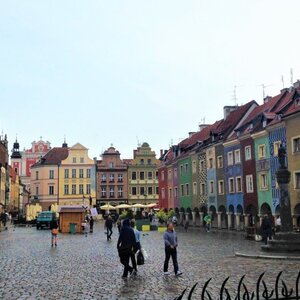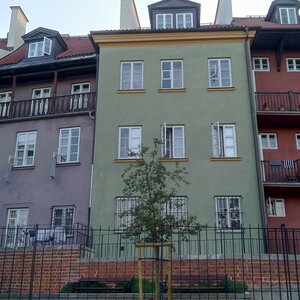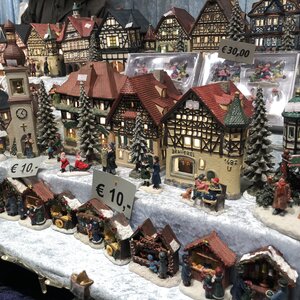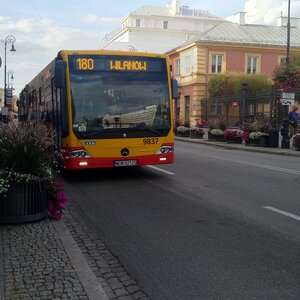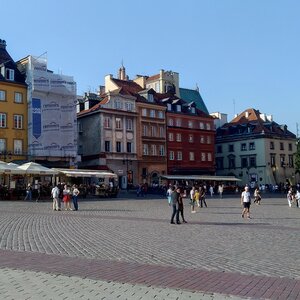Market Square (Rynek Główny)
Traditionally for a large European city, getting to know Krakow starts from the center — here you will find the Market Square, where most of the city’s main sights are located. From any angle and place, at any time of day, you can take good shots on the square.
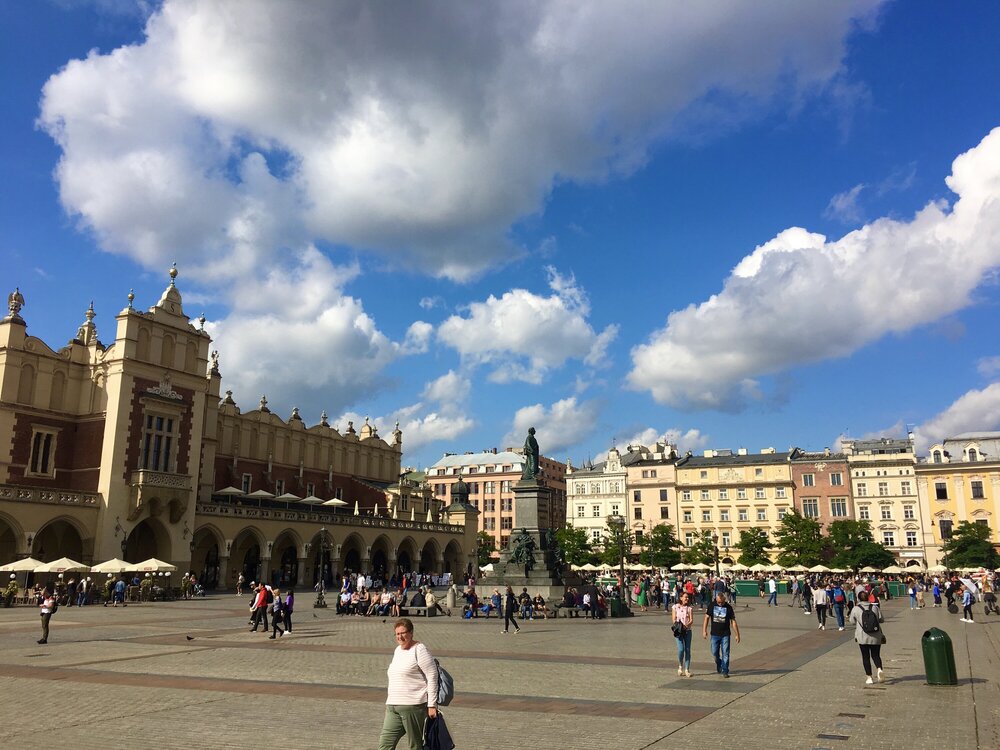

Sukiennice (Sukiennice)
This landmark is one of the symbols of the city and one of its most photogenic places. The cloth rows are on most postcards, brochures and even menus in Krakow’s restaurants. Tourists and honeymooners come here to have their pictures taken.
The history of the architectural monument is embedded in its name — originally the rows were built for the cloth trade. Later the building was used for balls, festive events and receptions of high-ranking officials. The trade purpose of Sukennits has survived to our times, but there is no trace of the cloth monopoly, and the shelves are filled with a variety of goods — souvenirs, jewelry, toys, bags, clothes.
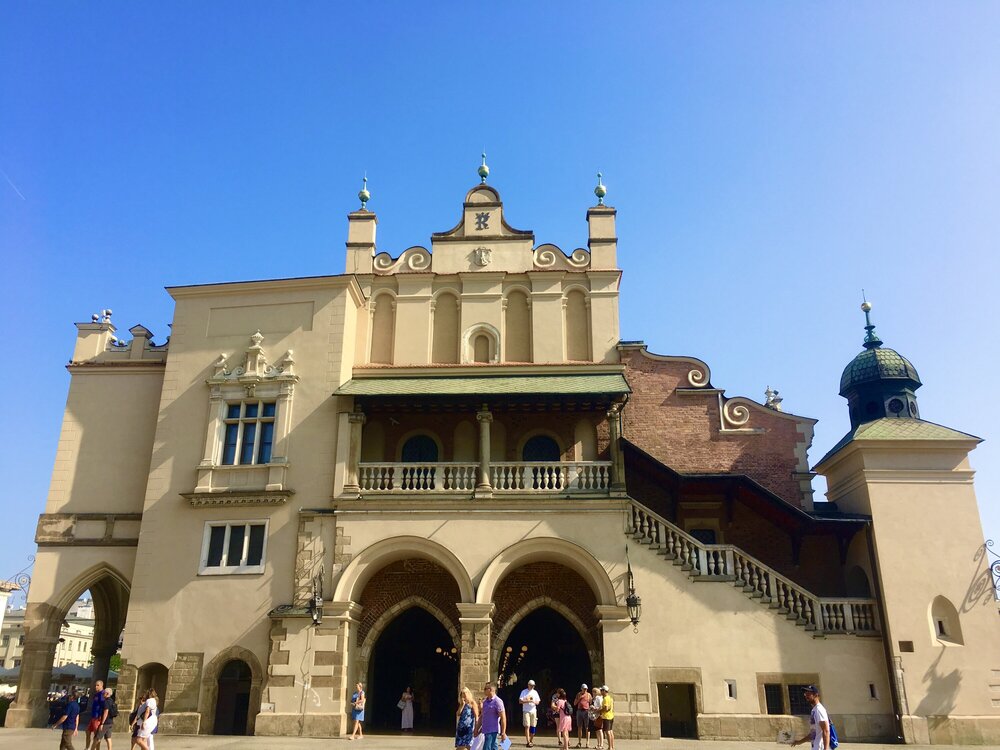
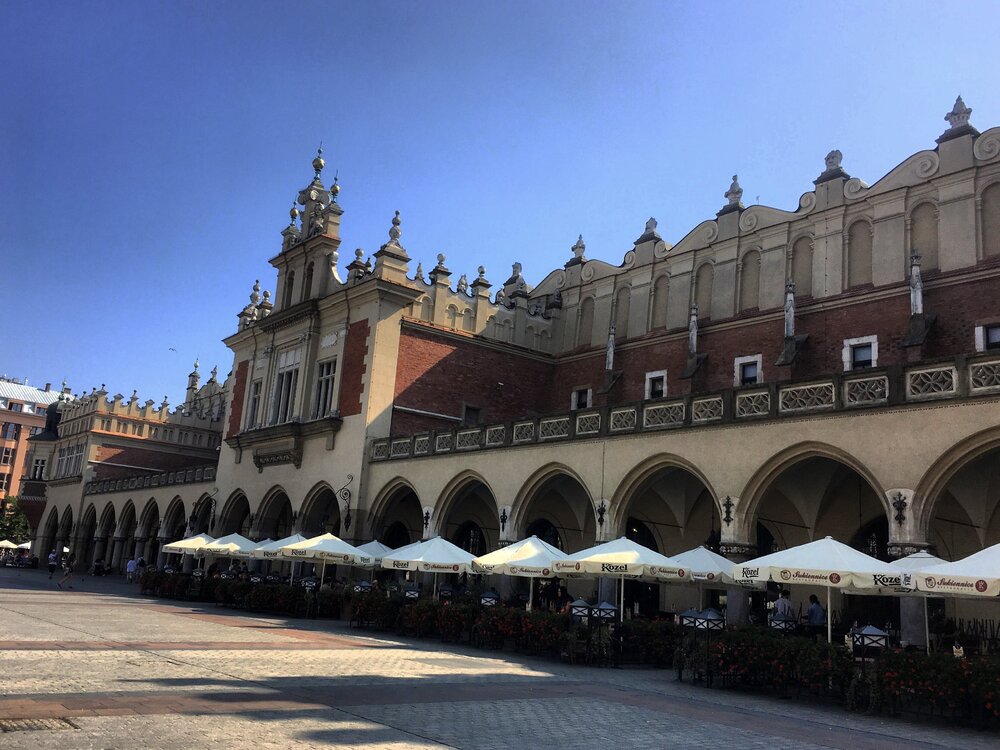
City Hall (Wieża Ratuszowa)
The City Hall Tower is all that remains of Krakow’s administrative building. The age of the tower is impressive — it is over 800 years old! There is a history museum inside, as well as an observation deck — from here you can take good shots of the Market Square and the surrounding area.
- Price: regular ticket — 10 PLN, students, children — 8 PLN.
- Opening hours: summer season (March — October) from wt to october, from 10:30 to 18:00.
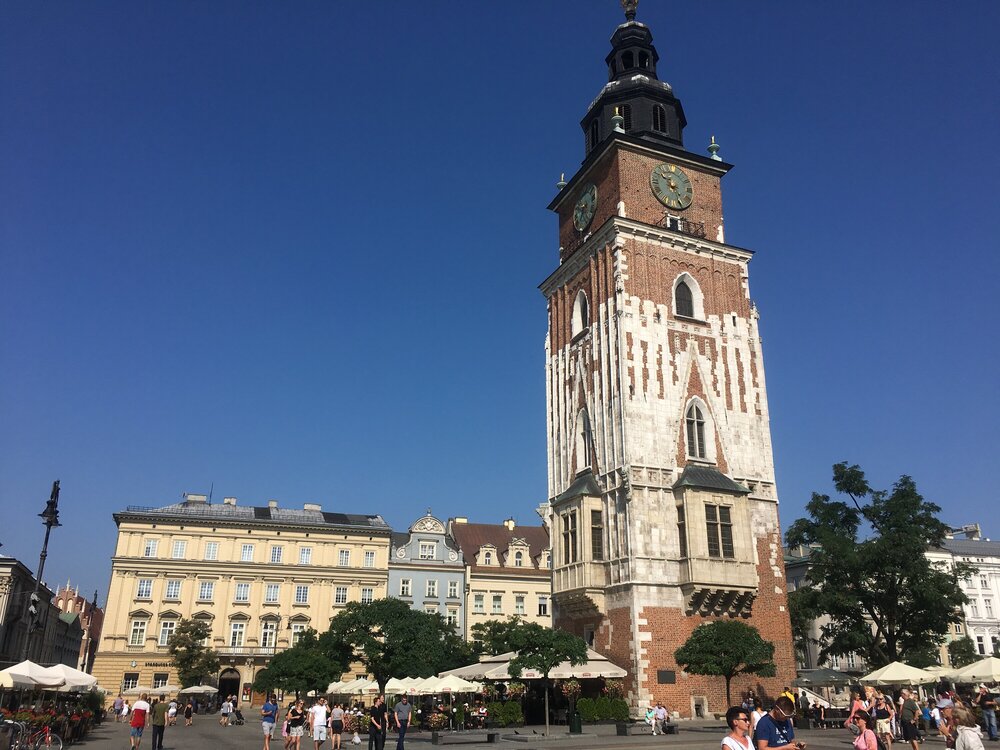
Mariack Church (Bazylika Mariacka)
Thanks to a legend gladly supported by local guides, the St. Mary’s Church is famous primarily for the melody of the «hejnal», which is played every hour by the church’s trumpeter. According to legend, during the Tartars' attack on Krakow, only five notes were played by the watchman to wake up the city’s inhabitants before he was killed by an arrow from the enemy. The beautiful story does its job, and now crowds of tourists gather under the church to listen to the «heynal» and afterward see the trumpeter waving his hand in greeting to the listeners. It is believed that seeing a trumpeter is good luck.
In my experience, the Mariatic Church is best photographed in the afternoon and evening: the building looks much more atmospheric in the setting sun.
- Price: regular ticket — 10 PLN, students, children — 5 PLN.
- Opening hours: every day from 11:30 to 18:00, Sundays and weekends from 14:00 to 18:00.
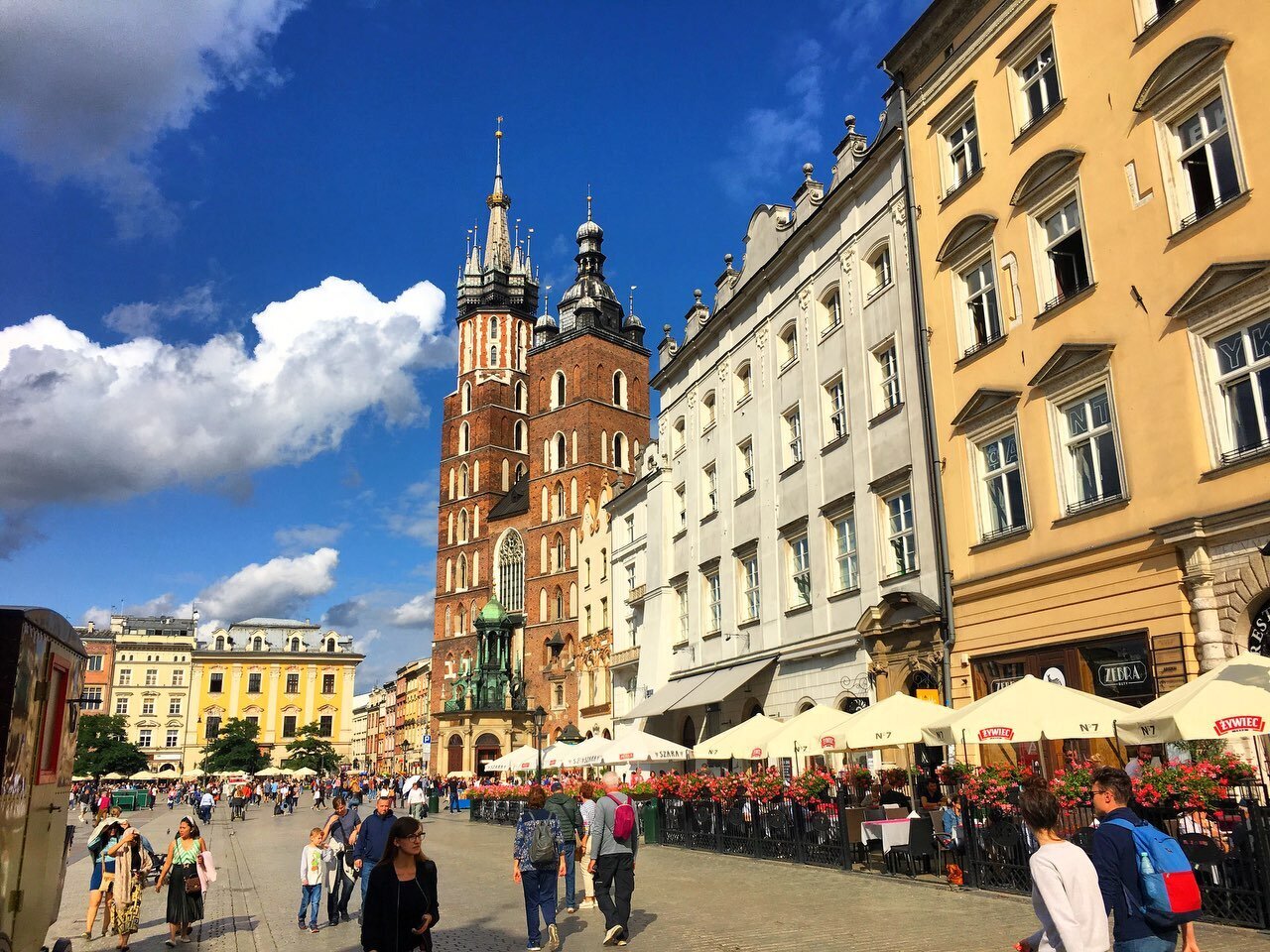
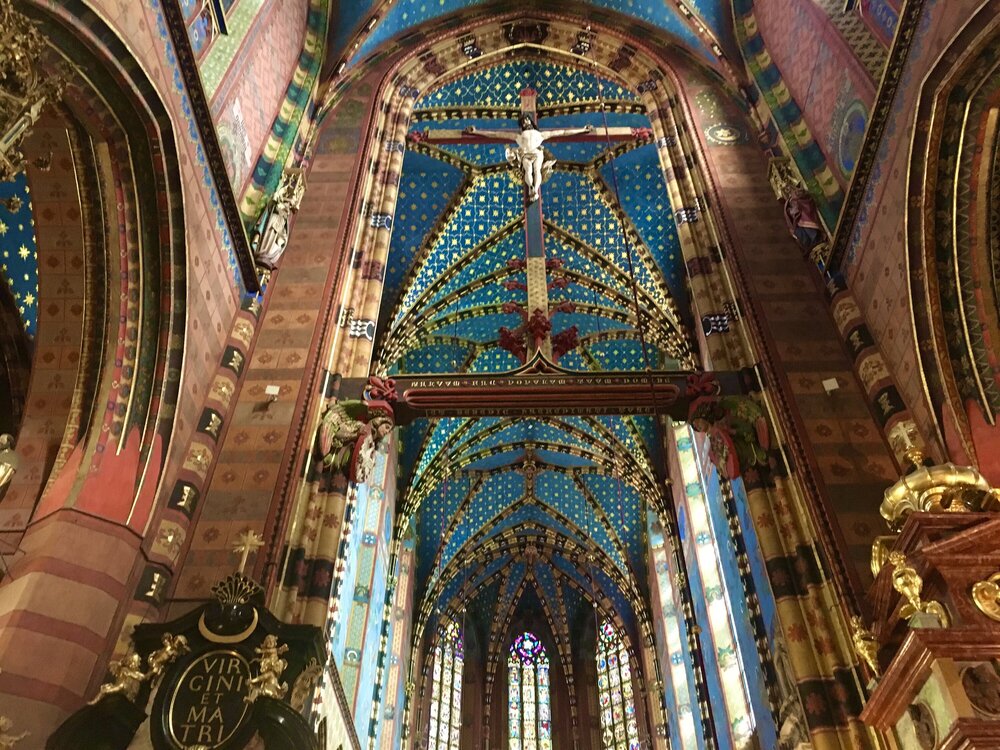
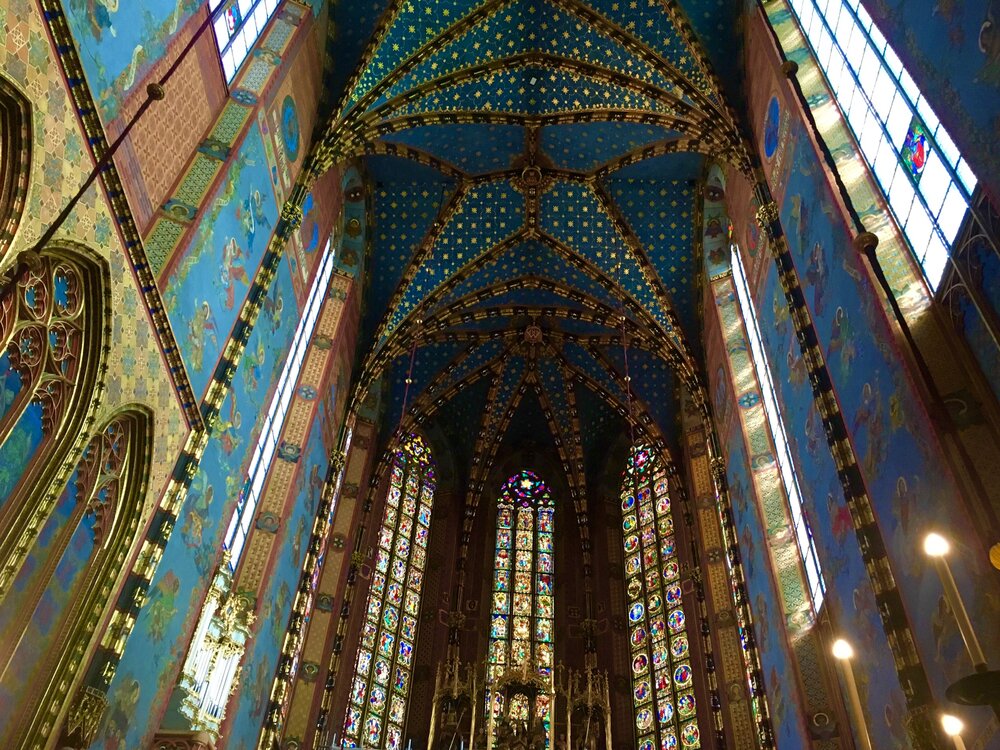
Adam Mickiewicz Monument (Pomnik Adama Mickiewicza)
Another photographed symbol of the city is the monument to the famous Polish poet. Like the Cloth Hall, it is often seen on postcards and magnets from Krakow. And like the church, it looks better in the sunset light.
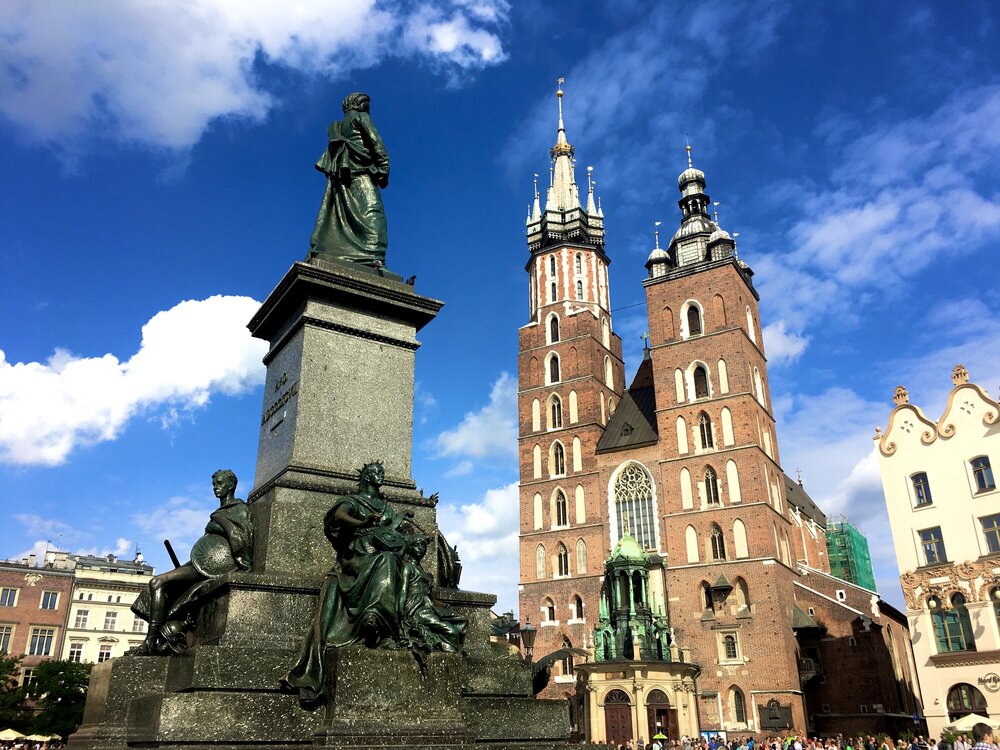
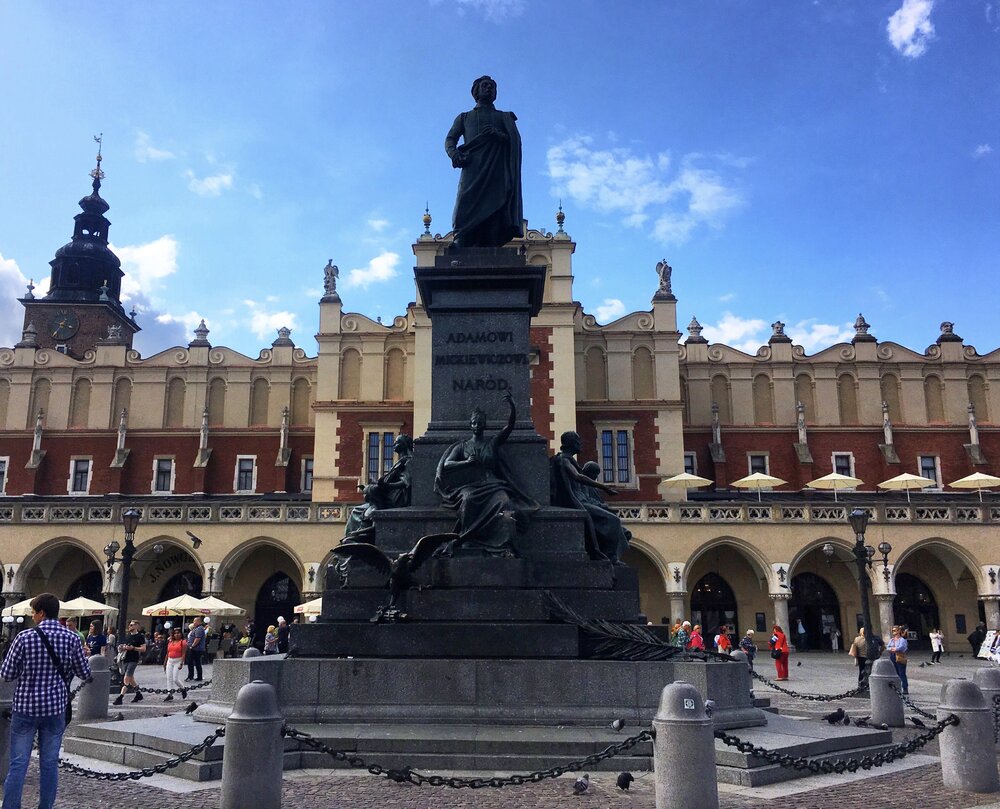
Eros bendato.
Unexpectedly, among the historical sights of the Old Town, a modern Polish sculptor Igor Mitoraj made up a fictitious head of Eros. It is known that Eros is the god of love in Greek mythology. The author’s composition symbolizes love, which sometimes makes people lose their heads.
According to a legend, if a girl climbs into the head of Eros, she can expect a marriage proposal in the near future. Despite this, tourists of both sexes are eager to be photographed near and inside the «severed head».
Floriańska Street (Ulica Floriańska)
Florianska Street is one of the most important and famous streets not only in Krakow, but in Poland as a whole. Polish magazine Wprost gave it the third place in the list of the most prestigious streets in the country, and in the CBRE ranking it ranks fourth in the top 10 streets in Poland. Tourists are attracted to Florianska Street not only by its postcard views, but also by its many boutiques and restaurants. It is beautiful at any time of day. The street ends with the Florian Gate, a preserved part of the city’s defensive wall.
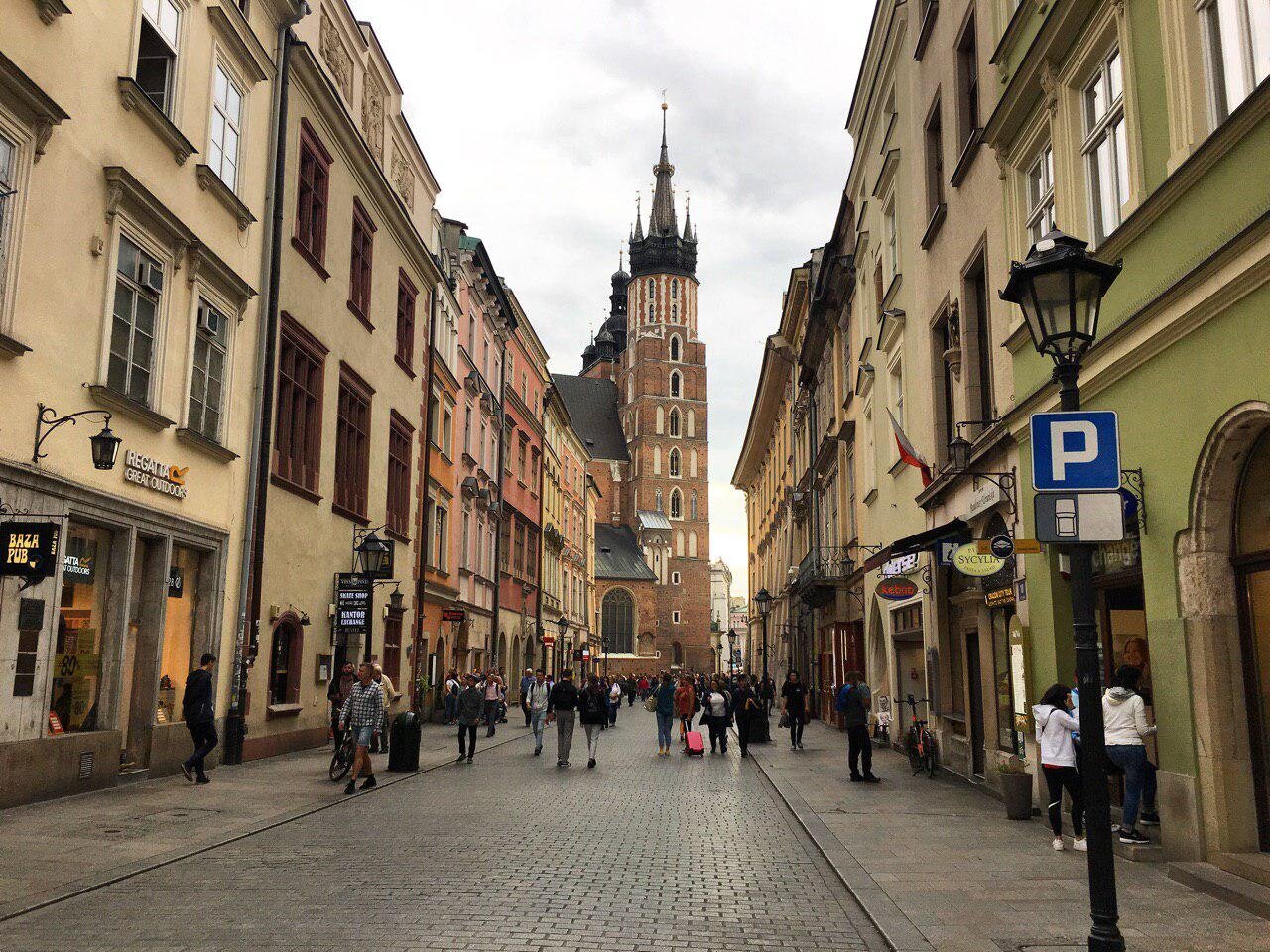
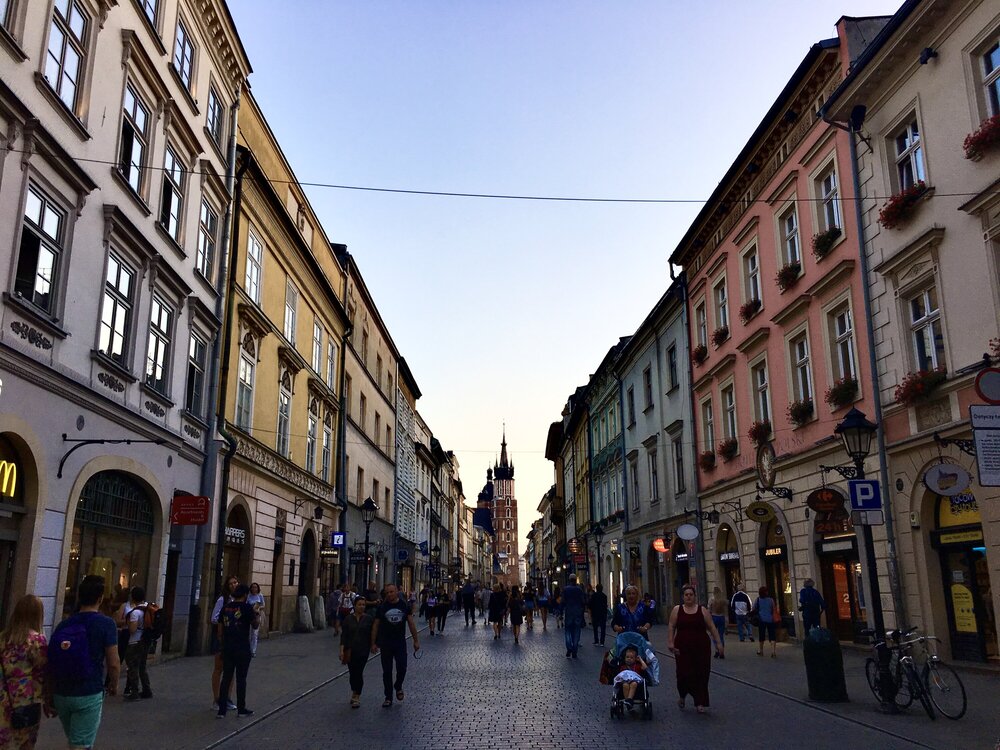
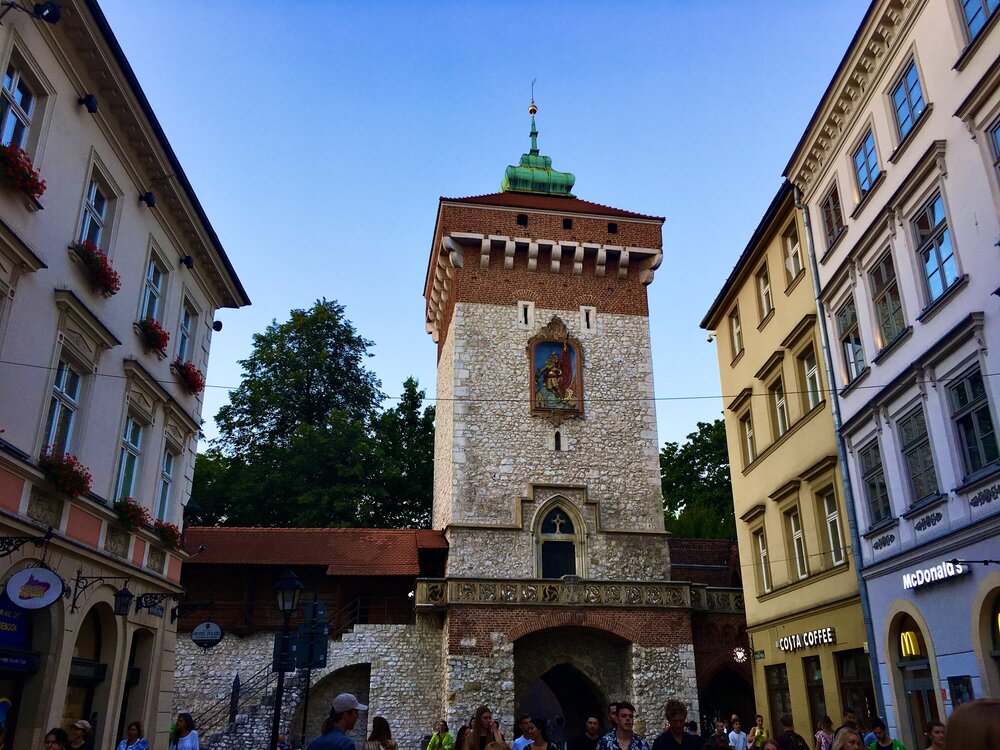
Ulica Grodzka (Grodzka Street)
On the way from the Market Square along Grodská Street to Krakow’s most famous castle, Wawel, is another photogenic Krakow attraction. I advise you to take your time exploring the street itself — it is one of the oldest avenues, many of its houses were inhabited by famous people, most of the buildings on the street are architectural monuments. It is cozy and atmospheric, horse-drawn carriages pass by regularly, with which you get a good shot of the ancient city.
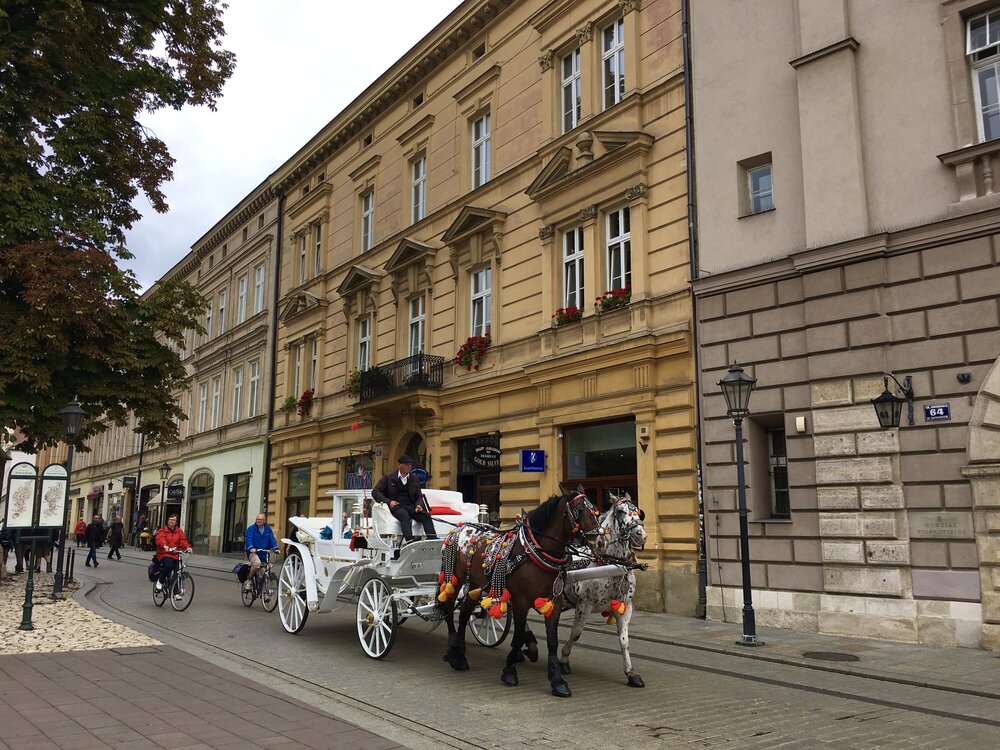
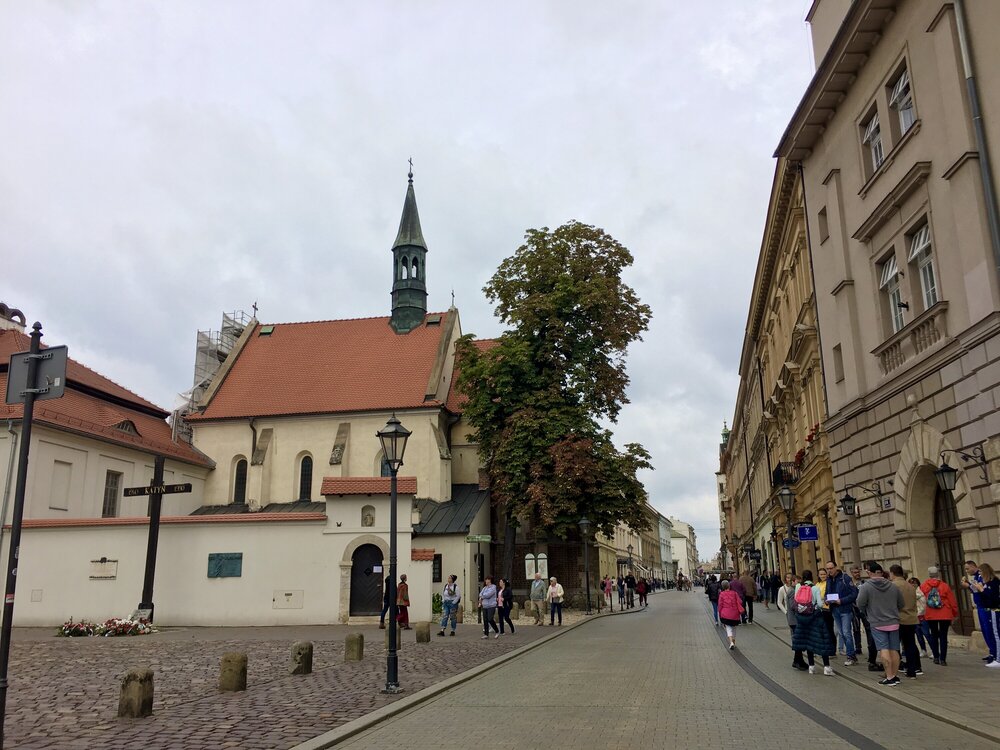
Church of Saints Peter and Paul (Kościół Świętych Apostołów Piotra i Pawła)
When walking around the Old Town, one’s hand reaches for the camera — one wants to capture every building from every possible angle. Therefore, the architects of the Church of St. Peter and St. Paul on Grodská Street used a few tricks to make sure that the shrine would not get lost against the background of other buildings in the city.
For starters, 12 statues of apostles were placed in front of the church facade, which attract the eye to the main building. The church itself is pushed a little further into the street, so that it can be seen from the side without having to look up.
The inside of the church is as beautiful as the outside. Regular organ concerts are held here, information about which can be found on the website, and there are stands at the entrance to the church with booklets about upcoming performances.
Price: free.
Opening hours: check the website.
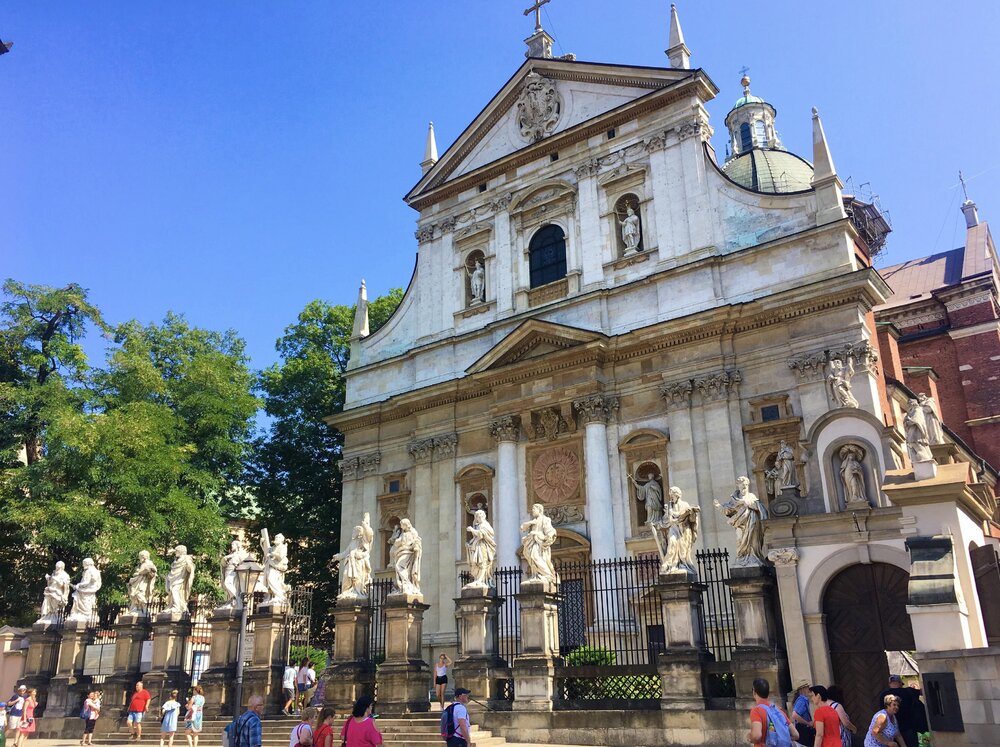
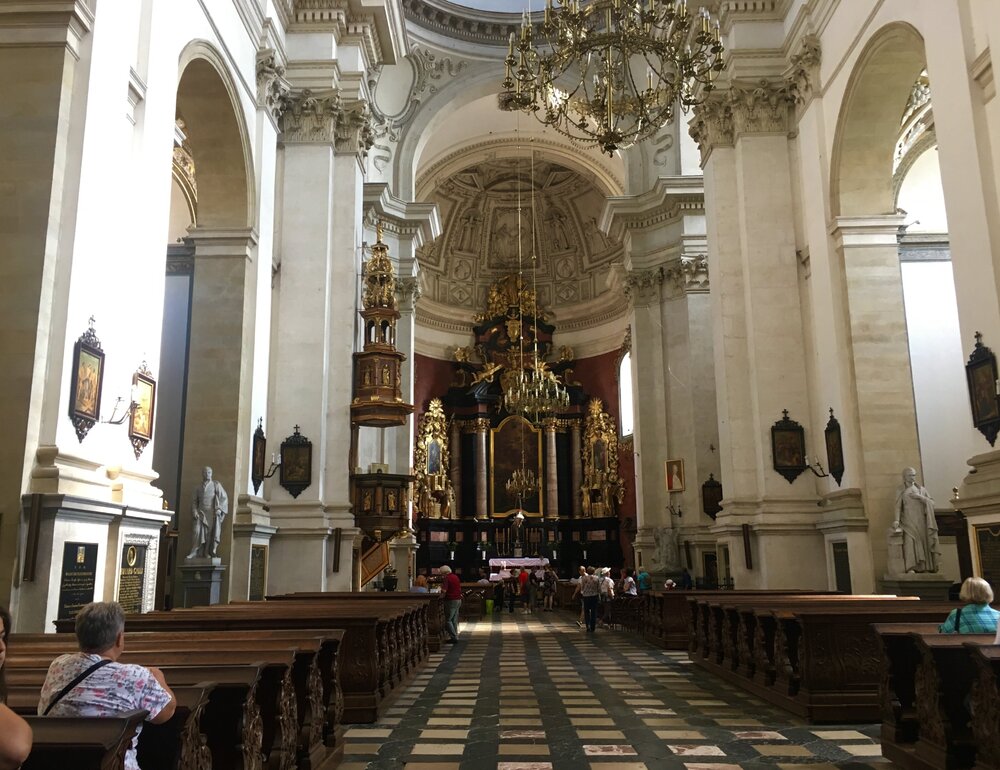

Royal Castle on Wawel (Wawel)
Over the centuries, the castle belonged to Poles, Lithuanians and Austrians, nevertheless remaining a symbol of Poland. The Royal Castle on Wawel is an entire architectural complex. Among the most visited here are:
- Sigismund’s Chapel
- Cathedral of St. Stanislaus and Wenceslas
- Cathedral Museum
- Central Royal Court
- The tomb of Polish kings (Polish President Lech Kaczynski and his wife, who died in a plane crash, are buried with them).
For a list of exhibitions, opening times and prices, visit the website.

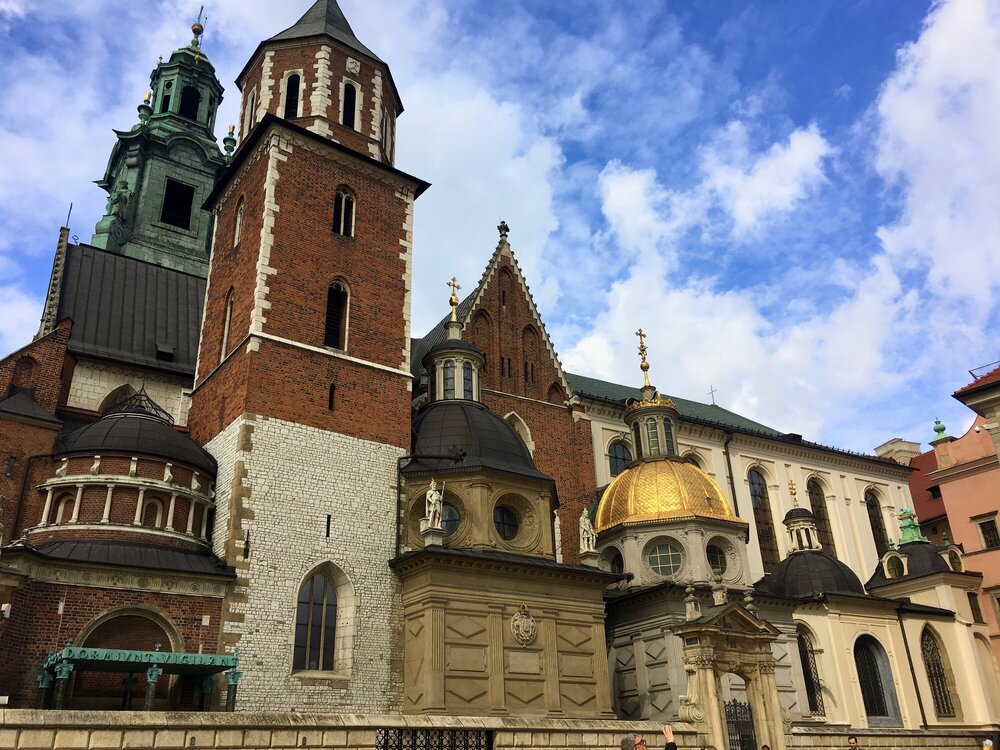
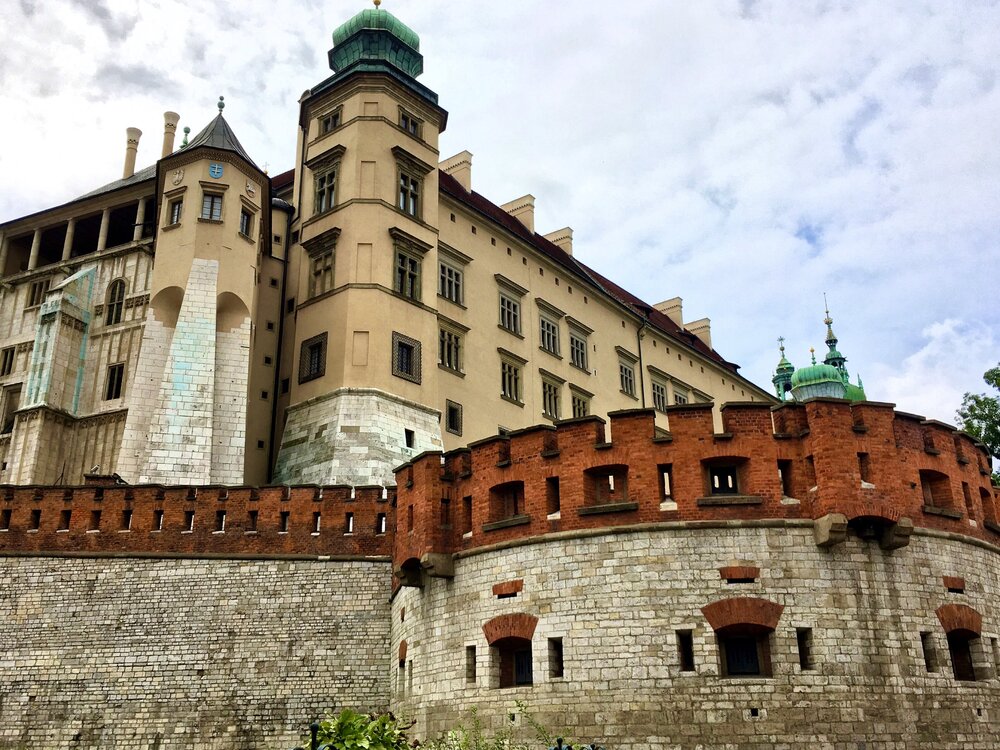
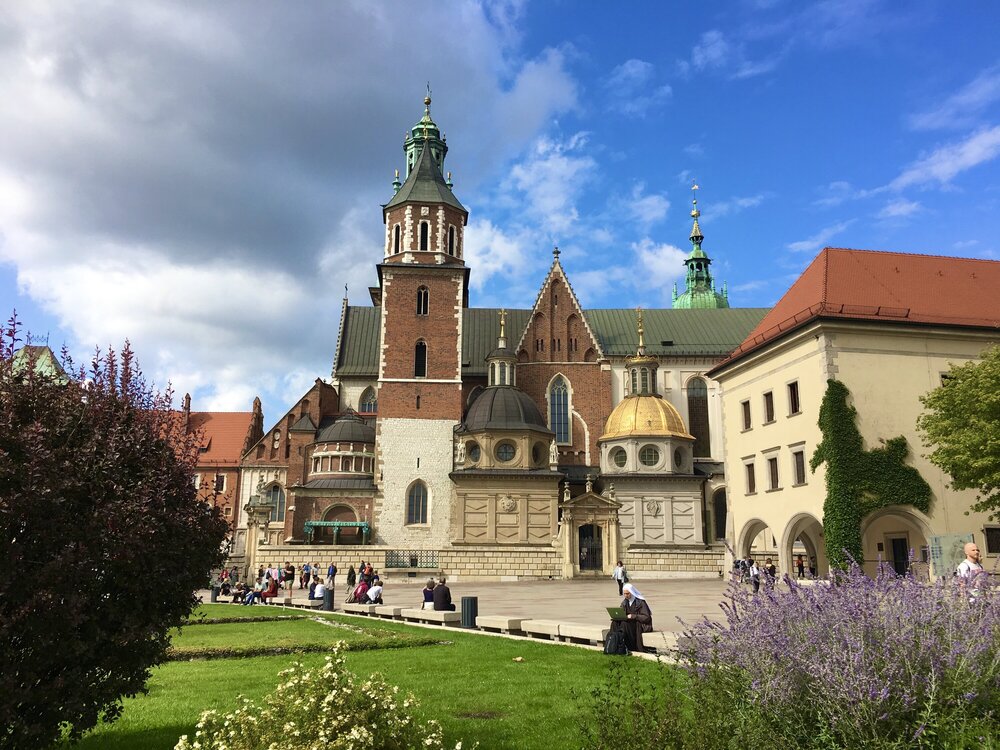
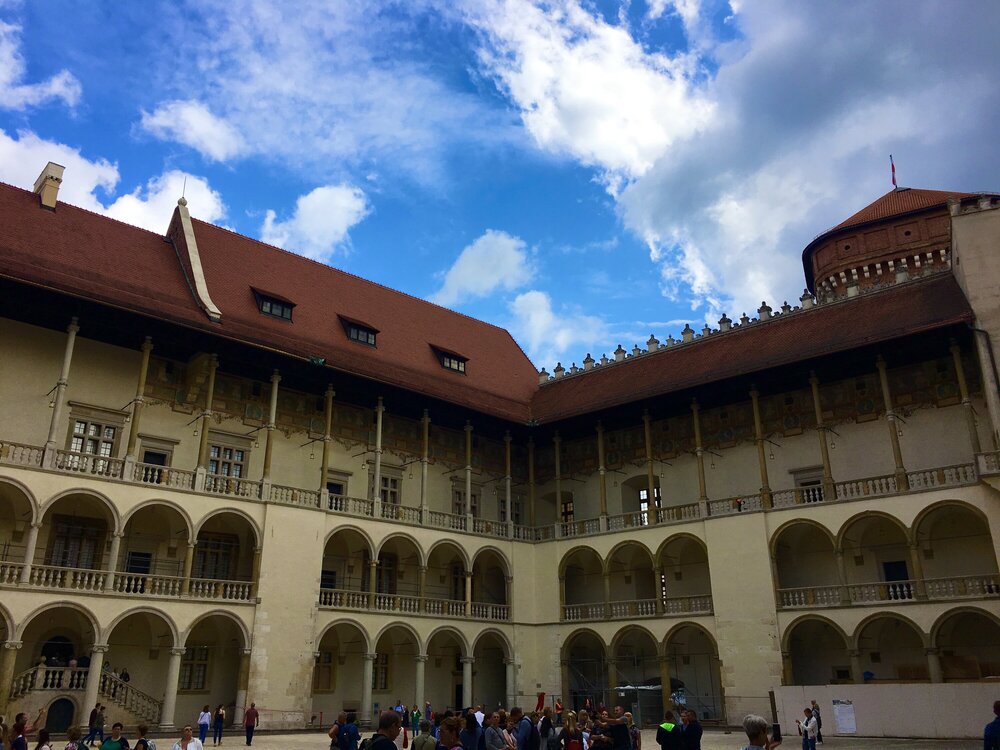
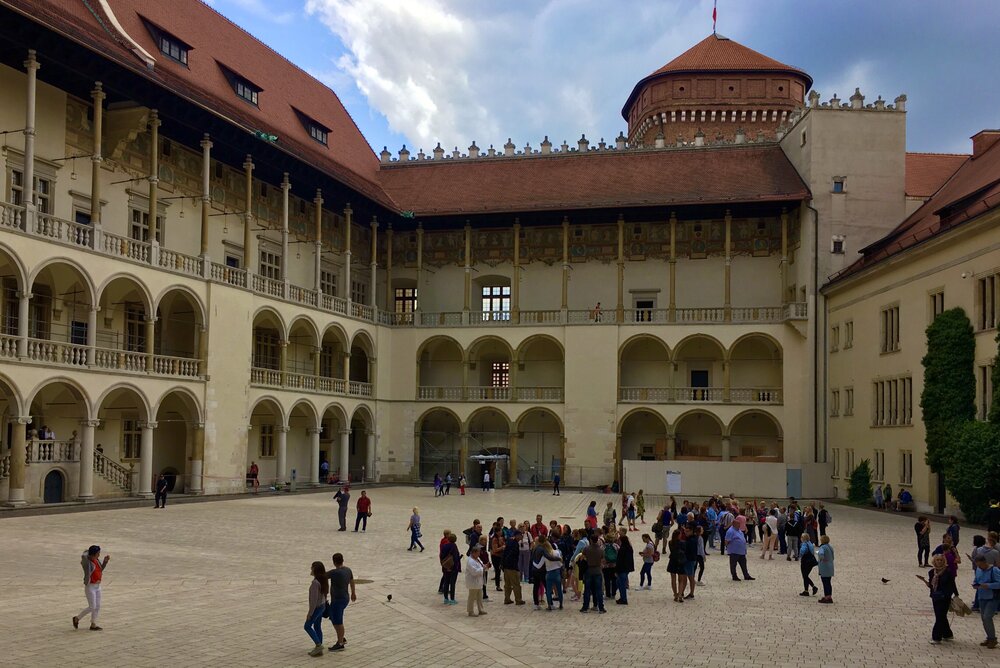
Lake Zakrzówek and the Twardowskie Rocks (Skałki Twardowskiego)
The Twardowski Rocks Park is located only 3 km from Wawel Castle, within the city limits. People come here to Zakrzuvek Lake — part of the park. The once flooded quarry has become a place of pilgrimage for those who like to tickle their nerves over the cliff, for young people picnicking over the Blue Lake, and for photographers — both amateurs and professionals.
How to get there: by any transport going towards «Borek Falecki» and «Lagewniki», get off at the stop «Kapelanka».
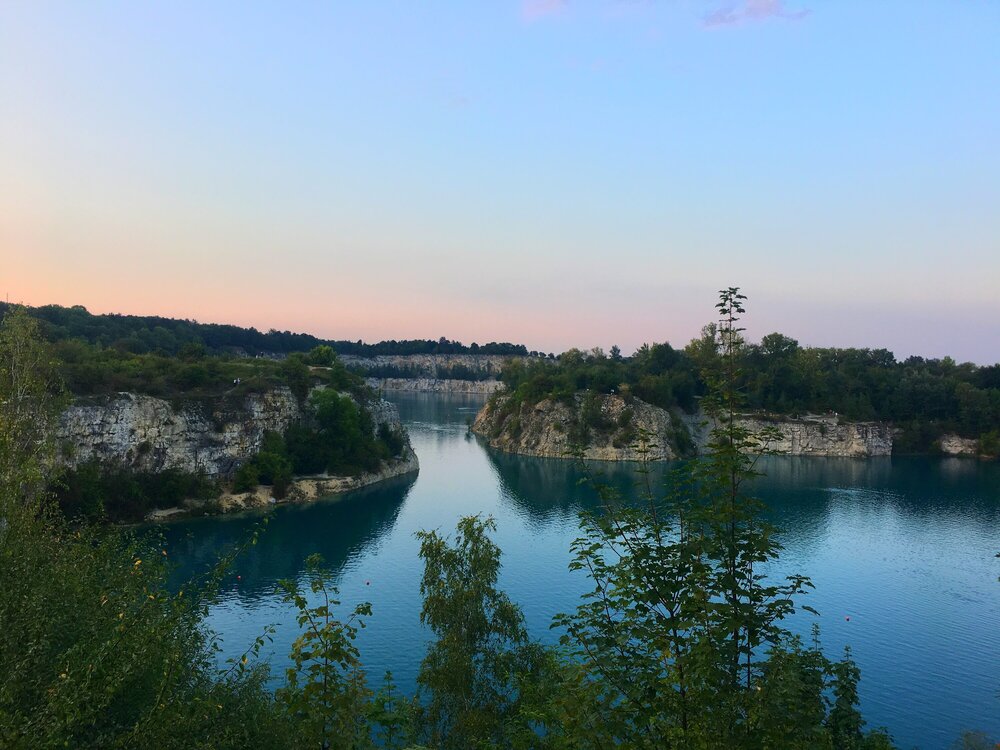
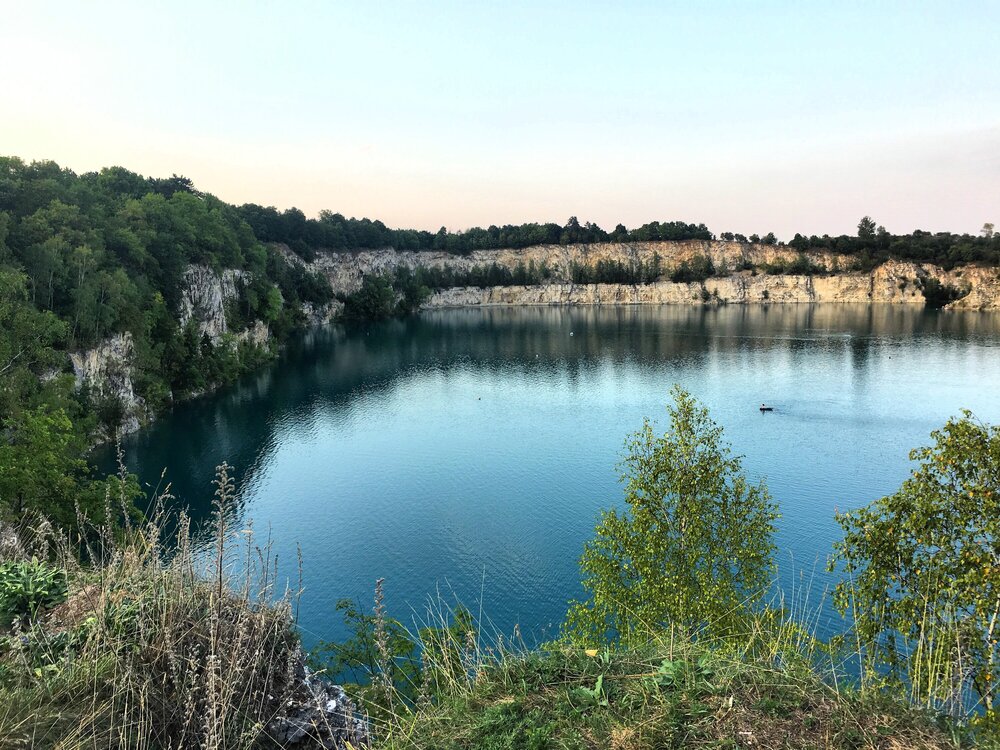
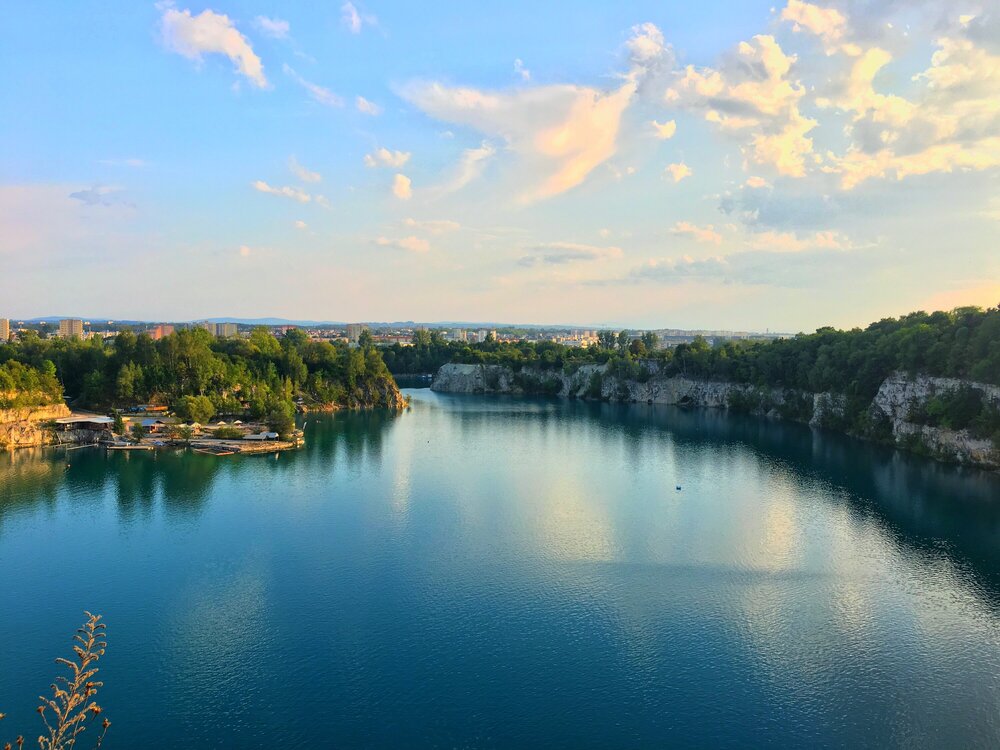
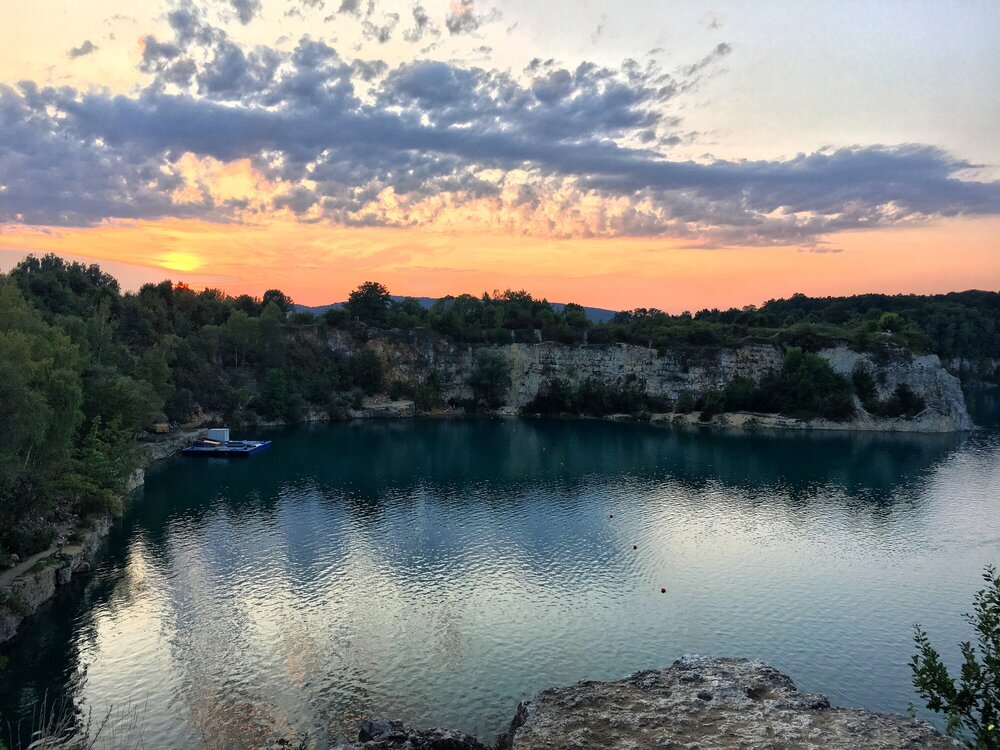

Kazimierz.
Kazimierz is a unique neighborhood in Krakow. Until the 19th century, it was a separate Jewish town in the neighborhood of Krakow. During World War II, almost the entire Jewish population of the neighborhood was gathered into the Krakow Ghetto, later murdered. The enamel factory of the famous Oskar Schindler, who saved hundreds of Krakow Jews from concentration camps, operated in Kazimierz. The movie «Schindler’s List» by Steven Spielberg was filmed in the streets of the district.
Now Kazimierz is the spiritual center of the Jewish community in Krakow. It is home to synagogues, a center of Jewish culture, and every restaurant or cafe in Kazimierz has traditional Jewish shakshuka or tzimmes on its menu. On the square in front of the Old Synagogue, musicians perform songs with Jewish motifs. The neighborhood is also famous for its vintage stores, flea markets and galleries.
How to get there: from the Market Square from the stop «Poczta Główna» by streetcars No. 8, 13, 18, 24, 52, 77.
